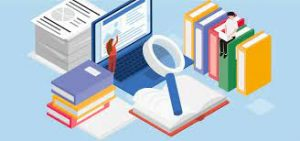Imagine a world where AI can effortlessly determine if someone is genuinely sick or faking it just by analyzing their voice. Thanks to a groundbreaking collaboration between the Sardar Vallabhbhai National Institute of Technology (SVNIT) and the Germany’s Rhenish University of Applied Science, this remarkable innovation is now a reality. Unveiling a cutting-edge AI tool that detects cold symptoms with a stunning 70% accuracy rate, the researchers are redefining how we assess health and verify sick leaves in the corporate and healthcare sectors.
Also Read: Bill Gates’ AI Predictions for Health and Education Transformation
A Joint Research Initiative: SVNIT and Rhenish University of Applied Science
Researchers at the Sardar Vallabhbhai National Institute of Technology (SVNIT) in Surat, India, and the Germany’s Rhenish University of Applied Science collaborated to develop a non-invasive method for detecting speech signals. This collaboration focused on analyzing the voice patterns of 630 individuals, including 111 with colds. Analyzing these voices helped identify whether they were genuinely suffering from cold symptoms. Their findings have led to some great AI-powered innovations in healthcare.
Voice Analysis: Uncovering Cold and Non-Cold Speech
The team scrutinized speech patterns to assess whether AI could accurately classify cold and non-cold speech. Frequent coughing and sneezing can strain the vocal cords and alter a person’s normal speaking patterns. This may cause them to develop a hoarse voice until they recover from a cold or similar illness.
Using harmonics and the vocal rhythms present in human speech, researchers were able to detect the presence of cold in individuals. Their study achieved an impressive 70% accuracy rate in detecting cold symptoms.
Also Read: Top 5 AI Voice Generators: Enhancing Your Business with Next-Gen Voice Solutions
The Method: Recitation and Description Tasks for Participants
Participants in the study were asked to perform three tasks:
- Counting from 1 to 40
- Describing their weekend plans
- Reciting Aesop’s fable titled “The North Wind and the Sun.”
These activities allowed the researchers to analyze various aspects of the participants’ speech patterns.
Published Findings: ScienceDirect Journal
The researchers’ findings were published in the science journal ScienceDirect. In the paper, they stated, “The proposed features efficiently capture the spectral difference between cold and non-cold speech and can be utilized to diagnose common cold and related disorders automatically.”
A Streamlined Method for Identifying Colds
This study aimed to develop a more efficient method to identify individuals with common colds based on their speech, with higher performance and fewer features. The team successfully developed a technique that required not only minimal input but also demonstrated high accuracy in detecting those symptoms.
Implications of AI in Corporate and Healthcare Sectors
This revolutionary detection technology has far-reaching implications. In the corporate world, it could assist managers in verifying the legitimacy of employees’ sick leaves. The healthcare sector could also benefit from a rapid, non-invasive method for diagnosing colds without consulting a doctor.
Also Read: AI Revolution in Legal Sector: Chatbots Take Center Stage in Courtrooms
A Promising 70% Accuracy Rate
The study’s 70% accuracy rate in detecting cold symptoms showcases the immense potential of AI. This could be a stepping stone in revolutionizing how we approach health assessments. As technology continues to advance, we can expect even more accurate and efficient AI-driven tools for evaluating and diagnosing various health conditions.
Our Say
The collaborative efforts of SVNIT and Rhenish University researchers have paved the way for a more efficient and accurate approach to detecting cold symptoms with AI tools. With a promising 70% accuracy rate, this innovative method revolutionizes how we verify sick leaves and diagnose health conditions. Embracing the potential of AI, we can look forward to even more advanced tools. These tools will reshape the future of healthcare and corporate well-being. This would make health assessments more accessible, reliable, and precise for everyone. Stay tuned to Analytics Vidhya blogs to know more about the world of generative AI!









